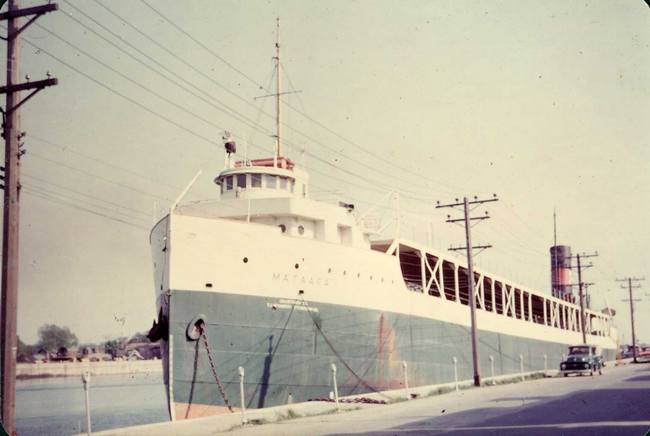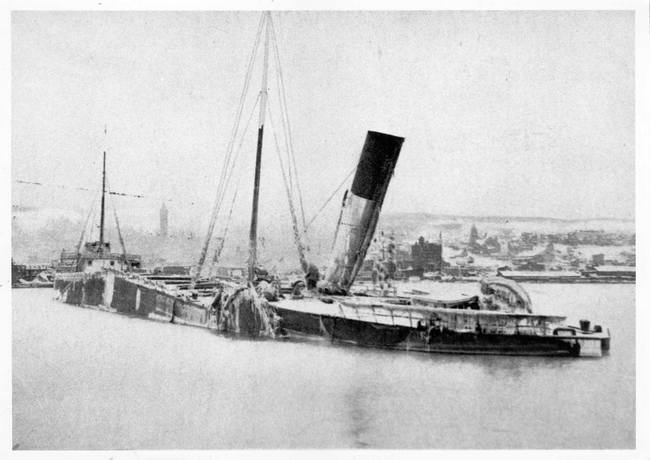Shipwreck: Mataafa
Skip Gillham, Vineland, Ontario, CanadaWhen Great Lakes sailors think of bad storms, a few naturally come to mind. Black Friday, October 20, 1916, claimed four ships of Lake Erie while the Armistice Day storm of November 11, 1940, also resulted in lost ships and lost lives. More recent "Gales of November" sent the Carl D. Bradley, Daniel J. Morrell and Edmund Fitzgerald to the bottom in 1958, 1966 and 1975, respectively.
Although devastating, these fall storms did not have the destruction of the "Great Storm" of November 1913, or the one that smashed the Lake Superior region in November 1905. The most dramatic casualty of the latter was the Mataafa.
This vessel had been built on speculation by the Cleveland Shipbuilding Company of Lorain, Ohio, and it was launched on February 25, 1899. It initially saw some service as PENNSYLVANIA on charter from the builders but was sold before the end of the first year.
The 450-foot long by 50-foot wide bulk carrier was acquired by the Minnesota Steamship Company and renamed Mataafa. The first full season of 1900 was not without difficulty as the ship hit a rock in the Straits of Mackinac and was leaking upon arrival Chicago on August 23. Then, while upbound, the ship went aground above the Soo Locks on September 1.
Mataafa became part of the original Pittsburgh Steamship Division of United States Steel when that company was organized in1901. It suffered another grounding, due to fog, on Knife Island Reef, Lake Superior, on June 2, 1902, but the worst was yet to come.
A gale swept Lake Superior after extraordinary high pressure began to fall on November 27, 1905. Snow, ice pellets, freezing temperatures and mountainous seas caused havoc all over the big lake. The most spectacular accident claimed the Mataafa.
A gale swept Lake Superior after extraordinary high pressure began to fall on November 27, 1905. Snow, ice pellets, freezing temperatures and mountainous seas caused havoc all over the big lake. The most spectacular accident claimed the Mataafa.
The ore-laden freighter departed Duluth, towing the consort barge James Nasmyth, in the late afternoon of November 27 only to be attacked on the open lake. After a futile battle with the elements, the Captain of Mataafa decided to turn back and seek shelter. He managed to turn his freighter and the trailing barge, but trying to bring both through the port entry in these conditions was unwise. As a result, the James Nasmyth was left at anchor on the lake to ride out the storm.
On the run for the harbor entry, Mataafa got caught by the current and was pushed off course. The hull hit bottom, smashed the pier and soon lost power. The ship and all on board were at the mercy of the wind, waves, and current; it was driven aground and broken into three pieces.
Of the twelve sailors on the settling stern, only three managed to work their way forward to the shelter of the Captain’s cabin. Nine more perished from exposure when the boilers went out, taking the last of the heat.
It was not until conditions subsided on the morning hours of November 19 that the sailors could be rescued. The battered remains of Mataafa are shown in a photo from the collection of the Canal Park Museum through the courtesy of Patrick Labadie.
Amazingly, the battered Mataafa was not only refloated, but it was repaired and operated until 1964. The ship continued to create a little more excitement, including a collision that sank the Sacramento at Duluth on October 13, 1908; rescued 19 from the ill-fated wooden steamer New York in Lake St. Clair on July 17, 1912; slammed into a pier at Superior on June 27, 1914; and rescued the crew of the barge Commodore off South East Shoal, Lake Erie, on June 17, 1918.
Mataafa was rebuilt in 1926 and converted from an ore carrier to an automobile carrier in1946. In later years the ship served the Nicholson Transit Co. loading new automobiles at Detroit for delivery around the Great Lakes.
The ship was tied up at Buffalo during 1964 and was sold to Marine Salvage for scrap. Mataafa is shown at Port Colborne en route from the Great Lakes in November 1964. Following a transatlantic tow, the ship was pulled into Hamburg, West Germany, on July 19, 1965, and was dismantled.
As a sideline, the barge James Nasmyth, left to the mercy of the seas in 1905, survived the tumult. It worked as a barge into the early 1950‘s and was then rebuilt as the powered freighter Pic River. This ship was not broken up until 1984.

The Mataafa shown at Port Colborne, November 11, 1964.

The battered remains of Mataafa.
